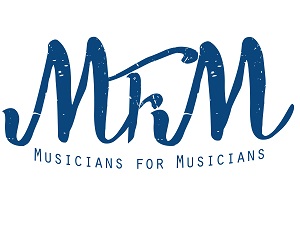MFM & IMA Present: “Music Is Essential” ZOOM Webinar #16 w. Hamid Najafi – Introducing TuneForte, a New Live Music Streaming Platform.
Report by Dawoud Kringle
On Thursday, February 15th, 2024, MFM in cooperation with the Independent Musicians Alliance (IMA) presented the 16th Zoom Webinar.
This episode featured Hamid Najafi, who introduced Tuneforte, an online platform specifically designed by musicians for musicians that uses AI, VR, and other technologies for streaming live concerts.
Hamid Najafi is an entrepreneur who received his Ph.D. in Electrical Engineering from Stanford University many years ago. He designed Samsung’s very first cell phone and started a few companies specializing in wireless and GPS over the years in Silicon Valley. He also trained as a classical singer, and he enjoys performing and recording occasionally. Tuneforte was born out of the desire to help musicians during the pandemic.
The host and moderator was MFM board member Adam Reifsteck.
After Adam opened the webinar, IMA president Mario Guarani offered an introduction to Hamid, with MFM president Sohrab Saadat Ladjevardi offering a few thoughts.
Hamid began by describing his background as an Iranian immigrant to the US, and how he developed his live-streaming app. Like many online communication innovations, this came from the COVID-19 pandemic. He also gave him an overview of his background as a singer and his background in opera. He began experimenting with On-Line performances. These experiences with the financial and technological necessities of online performances helped develop the app.
Tuneforte is an AI-based application. The user can find other users anywhere in the world who are putting on performances that are being streamed through this app. It attempts to solve the problem of musicians holding live concerts because of cost, etc. It uses AI, VR, and other technologies to make streaming live concerts easy, accessible, and profitable.
Tuneforte tries to differentiate itself from similar platforms and applications by being musician-centric, and by using AI models to facilitate the specific needs of performing musicians. It uses Tunecam AI to enhance the quality of the video and audio.
Some of the upcoming features in development include creative adaptive staging, an AI-based recommendation system to find former gigs, a virtual main hall, and a private corner for audiences to have live video communications to interact with fans and performers.
It can be set up to charge for tickets and admission. The artist gets 85% of the admission price connection. Payments are processed through Stripe.
Tuneforte also offers instructions with an FAQ. They have a small newsletter and mailing list to announce the performances, but the artist is expected to do their promotion. It can also allow you to schedule an event to play a recorded video as opposed to a live performance.
At this point, Hamid turned it over to Adam for the Q&A
The first thing that was discussed among the members was copyrights and publishing rights (the problems of covers and DJ’s use of the app were also explored). Sohrab recommended concentrating on original music and informing PRO of what music was performed. Copyright problems needed to be worked out. There was some discussion about the different dynamics using different venues.
Tuneforte has an archive where the person who created the event can post and stream past events.
The options for audio and video interfaces were discussed in some detail. Other options, problems, and possibilities were explored in the ensuing conversation. Hamid invited us to try it and made it clear he was open to feedback and suggestions from the users.
While the app is still in development, it’s clear that Tuneforte is a very useful tool to exploit a great deal of untapped potential for online music performances.

